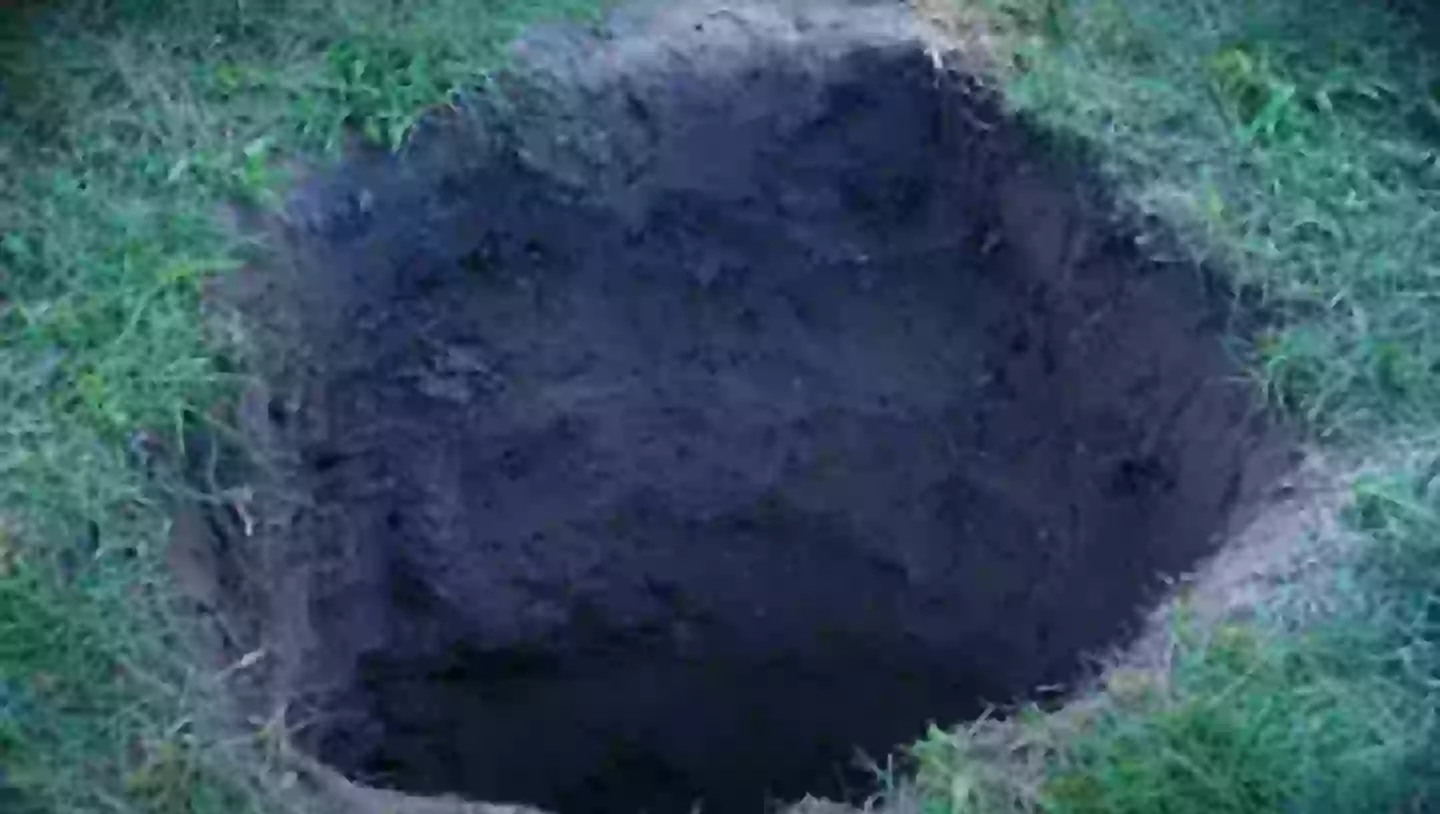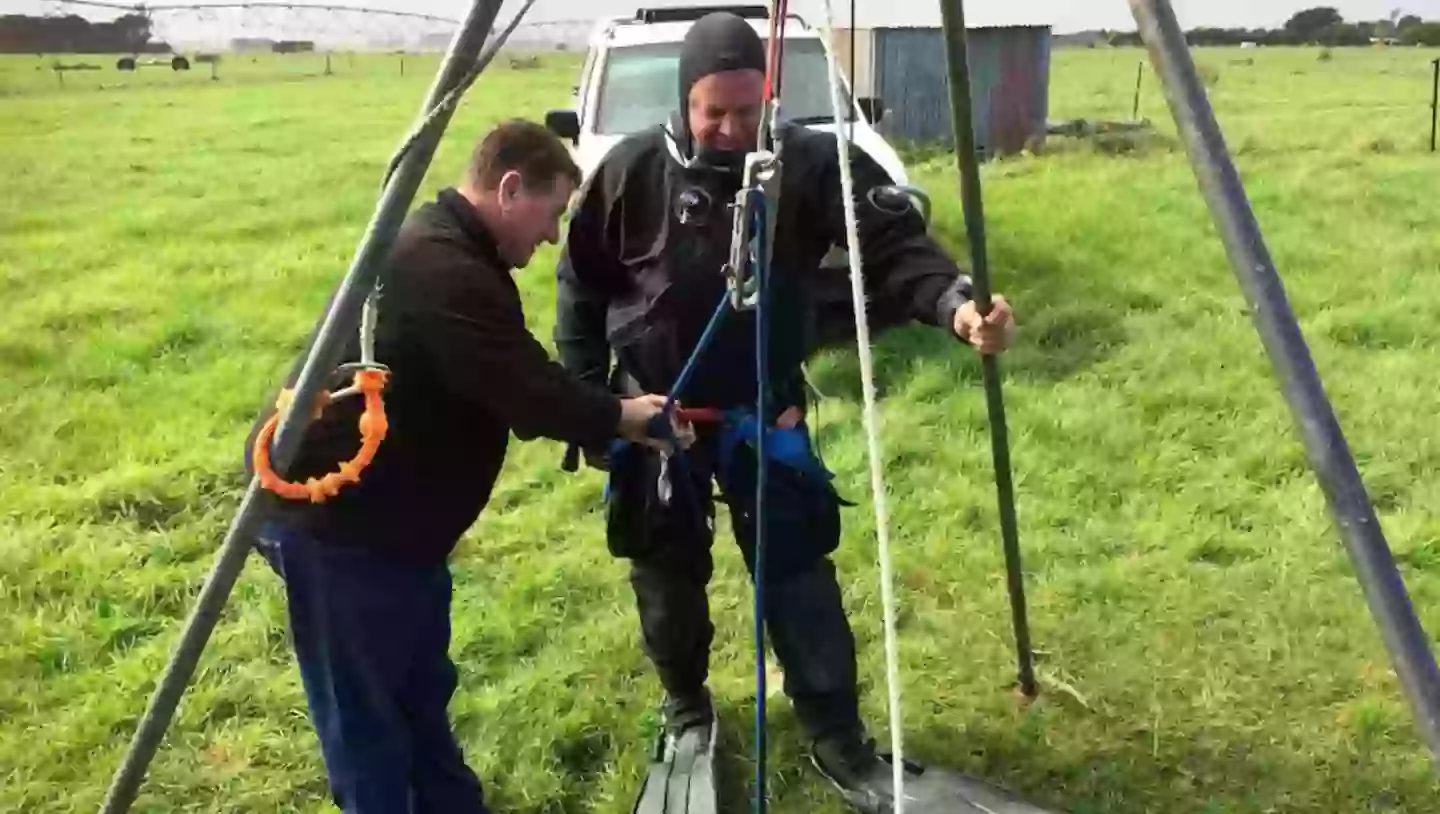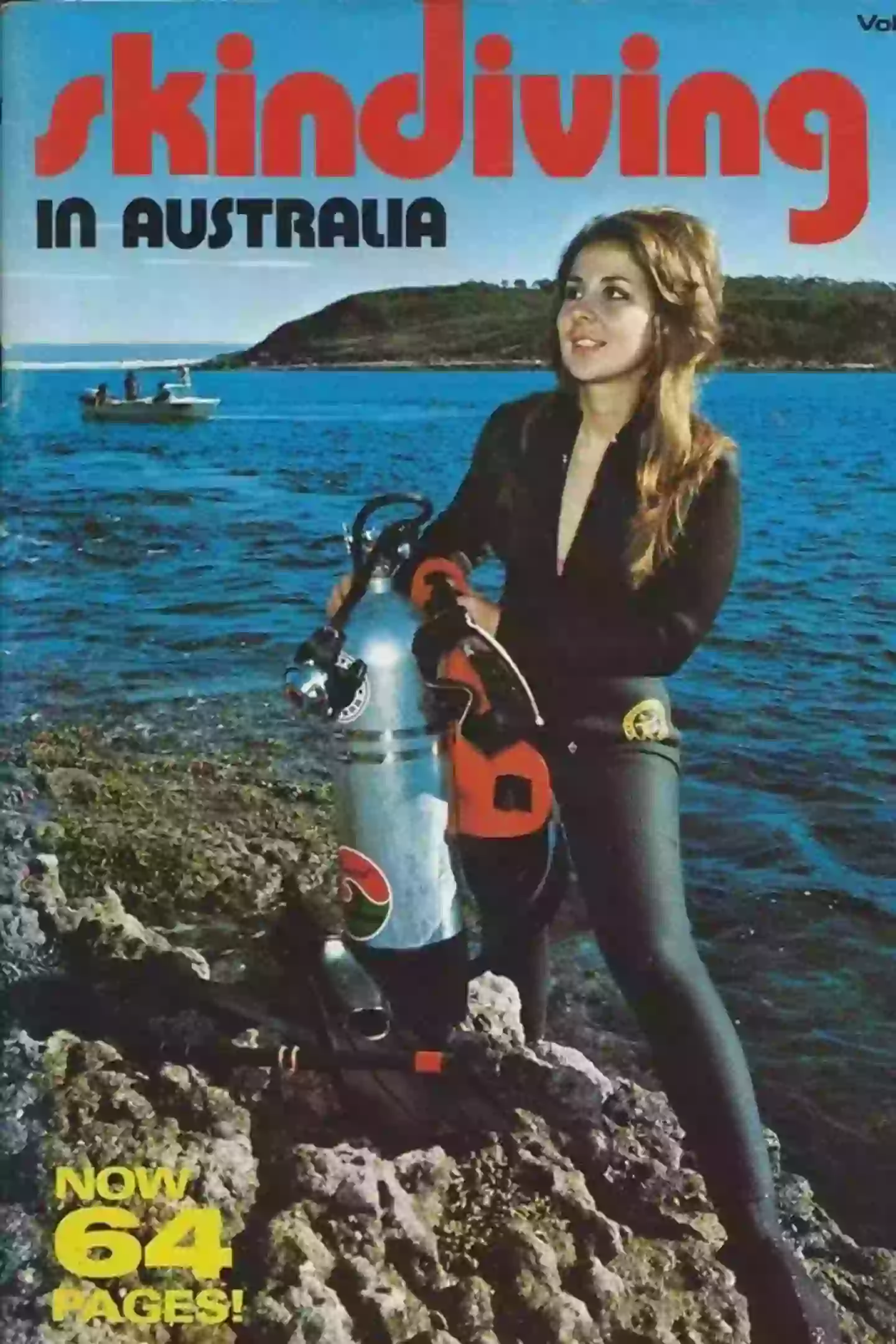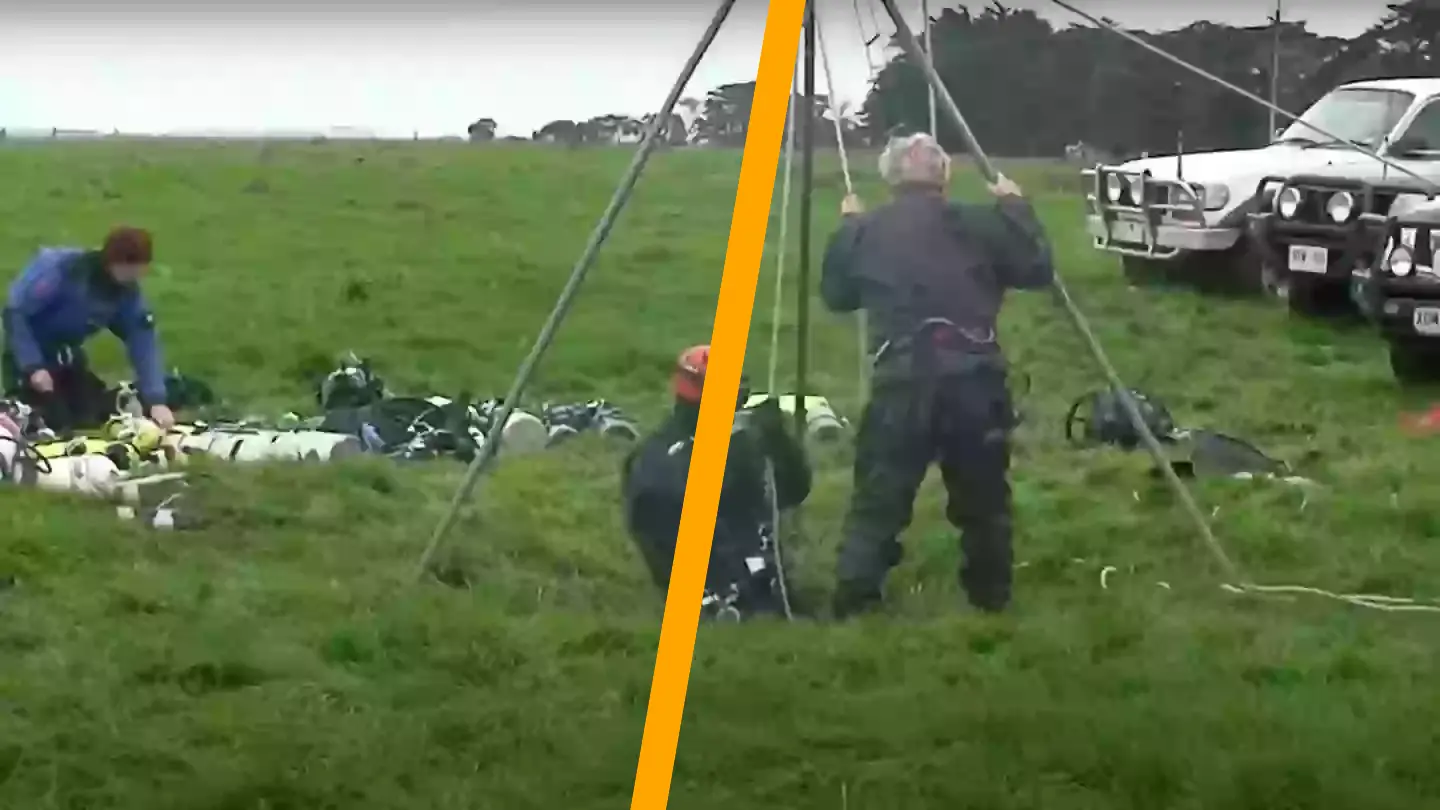A mysterious sinkhole found in Australia during the 1930s has led to the deaths of four scuba divers, limiting exploration to only the most skilled divers.
Trevor Ashby, a third-generation farmer, operates a dairy farm near Mount Gambier in South Australia. From the surface, it resembles any typical farmland, complete with grazing cattle and animal enclosures.
Beneath this seemingly ordinary landscape lies a remarkable cavern, often referred to as a ‘bottomless pit,’ estimated to be about 394 feet deep.
This subterranean wonder, commonly known as the Shaft, was initially discovered in 1938. A perplexed farmer noticed his horse nearly stumbling in the field, leading to the revelation of the sinkhole, as reported by the Daily Star.

Interest in exploring the site has persisted over the years due to this unique geological occurrence.
“We really didn’t have a clue how big it was underneath. We had no hope of filling it up,” Ashby shared with ABC.
“It looks like an ant hill down there, and we’ve tipped a thousand tonnes of stone down there.”
The Border Watch notes that the Shaft’s main chamber is 140 meters across and narrows to about 80 meters.
Dr. Tim Payne, an instructor from the Cave Divers Association of Australia (CDAA) and the Shaft dive guide, stated to the site, “It is a truly spectacular sight to behold when you are floating at 40 metres and a shaft of bright sunlight beams through that little hole way above you.”

Dr. Payne, who described the Shaft as ‘one of the jewels of the region,’ acknowledged its appeal to cave divers worldwide.
“Its unique location, crystal-clear water and scale are factors contributing to its status as a premium site,” he said. “The visibility is such that divers can be seen from end-to-end of the main chamber.”
In the late ’60s and early ’70s, the Shaft became a popular spot for adventurers seeking thrills.
“We’ve had people who have dived all around the world and have come to here and they just couldn’t believe the size of the room that we’ve got under our feet here in the middle of a cow paddock,” cave diving instructor Gary Barclay told ABC.
However, the site’s allure dimmed when four divers met their demise in its depths.
In 1973, 18-year-old Christine M. Millott, her brother Stephen, Gordon G. Roberts, John H. Bockerman, and four others dove into the submerged sinkhole.

Regrettably, they ventured beyond their intended limits, became disoriented, and were unable to find their way back to the surface.
According to a police report, they may have eventually exhausted their air supply and drowned. Their bodies were trapped in the pit.
“There was no hope of recovering alive any of the overdue divers from the outset,” stated the inquiry by former Chief Superintendent Wallace B. Budd.
“Almost eight months elapsed before the first body was located and that was only by chance.”
The remaining three divers’ bodies stayed hidden until two divers trained by Royal Australian Navy instructors recovered them.
Despite the risks, diving in the sinkhole is still possible. However, since it’s on private property, only CDAA-accredited divers can explore it.

